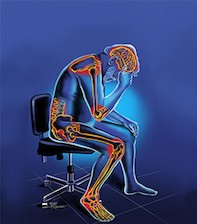Peer Reviewed
Feature Article Pain medicine
Acute and chronic musculoskeletal pain: pharmacological management
Abstract
A multimodal, multidisciplinary approach is required when managing patients with musculoskeletal pain. Nonopioid analgesics should be trialled first and opioids then used with caution.
Key Points
- Musculoskeletal pain is common and has significant consequences for affected patients and society as a whole.
- Musculoskeletal pain is not purely nociceptive; peripheral inflammation and central sensitisation processes, as well as neuropathic components, contribute.
- Management of patients with these conditions should be multimodal and multidisciplinary, not rely on pharmacological approaches alone, and follow principles of chronic disease management aiming for improved function.
- Nonopioid analgesics, in particular NSAIDs, play an important role in the pharmacological management of patients with these conditions.
- Opioids should be used with caution and only after careful consideration in patients with musculoskeletal pain; tramadol, buprenorphine and tapentadol may be preferable here.
- Adjuvants such as anticonvulsants (e.g. pregabalin) and antidepressants (e.g. duloxetine) may play a previously underestimated role in the management of patients with musculoskeletal pain.
Picture credit: © McDermott Pain Management 2015. US Copyright Registration # VAu 001-20-4996
Purchase the PDF version of this article
Already a subscriber? Login here.

